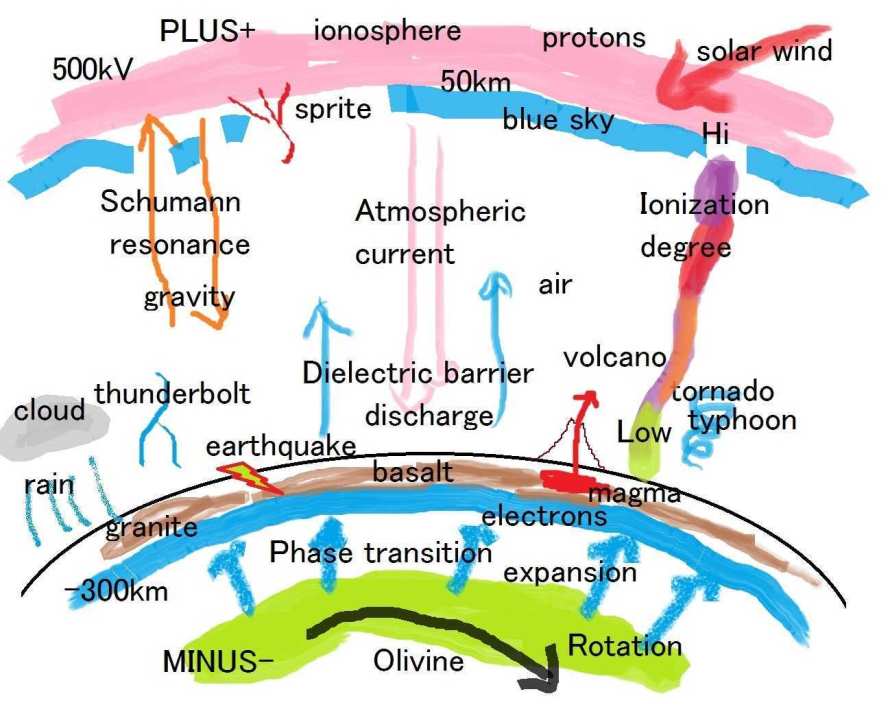Dielectric barrier discharge
There is a potential difference of 300,000 volts between the surface and the ionosphere. In addition, electrons that exist in large amounts in the crust each have different potentials. The atmosphere is an ionized dielectric. In other words, the surface of the earth and the ionosphere sandwich the atmosphere and have a dielectric barrier discharge.

The ionosphere is composed of protons and electrons by the solar wind. It is a plus because there are many protons. On the earth side, the olivine inside is phase-shifted to become an electron-dominated environment. Both the ionosphere and the crust behave as an alternating current because the voltages possessed by the protons and electrons are disjointed. Environment of dielectric barrier discharge. Protons move to the surface as atmospheric current from the ionosphere. Electrons also move toward the ionosphere from inside the crust. Inside the crust, a large amount of accumulated electrons is rotated to obtain angular acceleration, and a magnetic field and Schumann resonance occur. A part of the electrons becomes an electric current flowing to the magma, and it becomes a power source of rotation. Electrons are emitted to the surface in the form of dielectric barrier discharge. Causes weather phenomena such as rain, typhoons and sprites. Most of the phenomena that occur in the crust and in the atmosphere can be explained as electron transport and dielectric barrier discharge phenomena.
- Log in to post comments